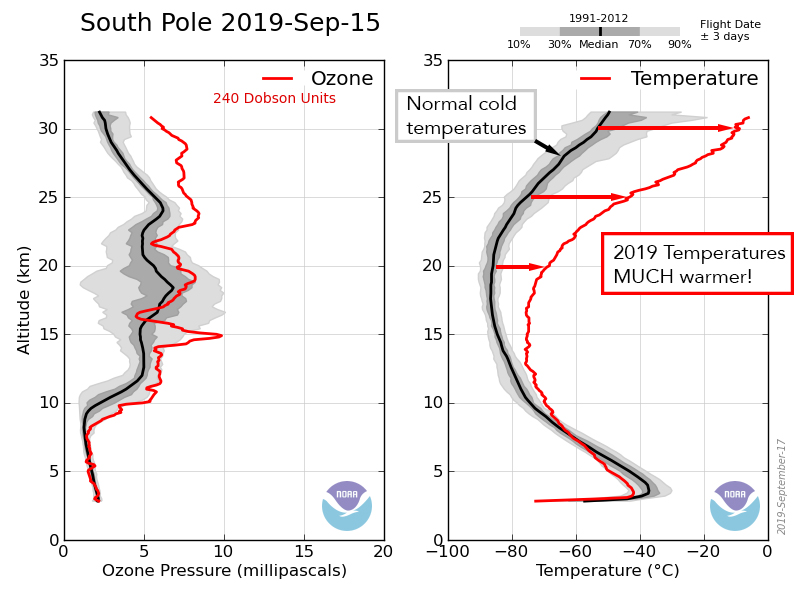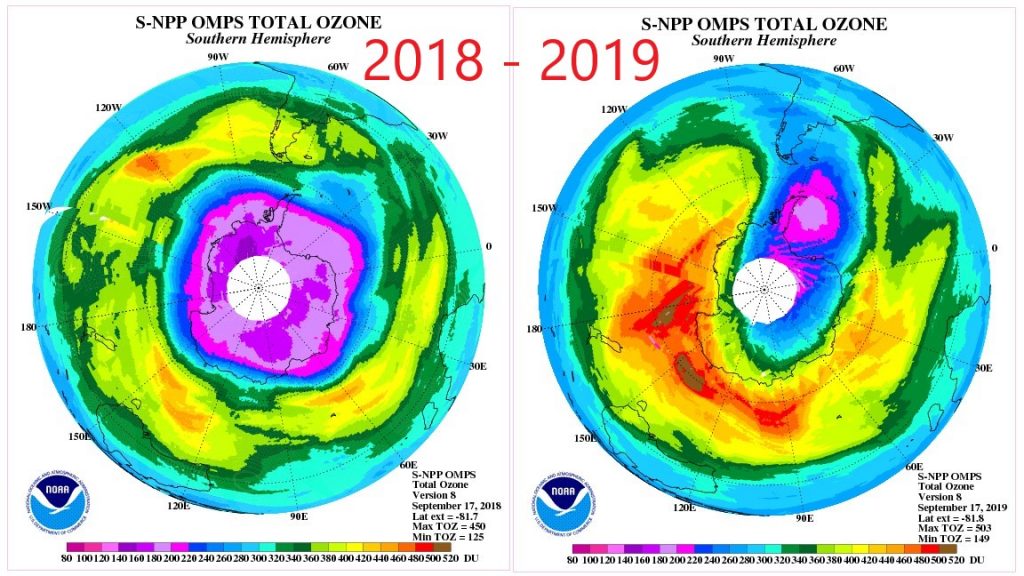
A rare atmospheric phenomenon is occurring over Antarctica that is putting the brakes on this year’s formation of the annual Antarctic Ozone Hole. Extremely warm stratospheric air temperatures are forcing their way over the South Pole and weakening the Antarctic Polar Vortex. This type of event is called Sudden Stratospheric Warming, or SSW, and is a relatively rare occurrence over Antarctica with the last major event happening back in 2002 when the Ozone Hole prematurely split in to two pieces. These events are rare in the southern hemisphere because the geography of a cold continent surrounded by the relatively warm waters of the Southern Ocean reinforces the stability of circulation patterns called the Antarctic Polar Vortex.
Stratospheric ozone is constantly being created and destroyed in our atmosphere but the concentrations remain in balance. Chlorine, present in the stratosphere because of human activity, tips that balance towards lower concentrations of protective ozone. But, it wasn’t until the discovery of the annual formation of the Ozone Hole that we learned just how out of balance the system could get.
The formation of a strong polar vortex and the frigid temperatures it contains is critical to the mechanics that cause the annual catastrophic ozone loss called the Antarctic Ozone Hole. With extremely warm temperatures weakening the stability of the polar vortex this year, we won’t see as large of a depletion event in the ozone layer above the South Pole as we have seen since soon after the Ozone Hole was first discovered in the 1980’s. But, this doesn’t mean that everything with the ozone layer is fixed. For example, just last year the vortex persisted well into October and we saw the 12th deepest ozone hole as measured by scientific instruments launched from the Amundsen-Scott South Pole Station.

Ozone depletion will continue to occur in the presence of ozone depleting substances, but the addition of a strong polar vortex multiplies that destruction. Full recovery of the ozone layer, and what scientists have been watching for, is when we see a typically strong polar vortex form, but without an accompanying ozone hole. Scientists expect that to occur sometime in the middle of the century as the presence of ozone depleting substances continue to decline.
